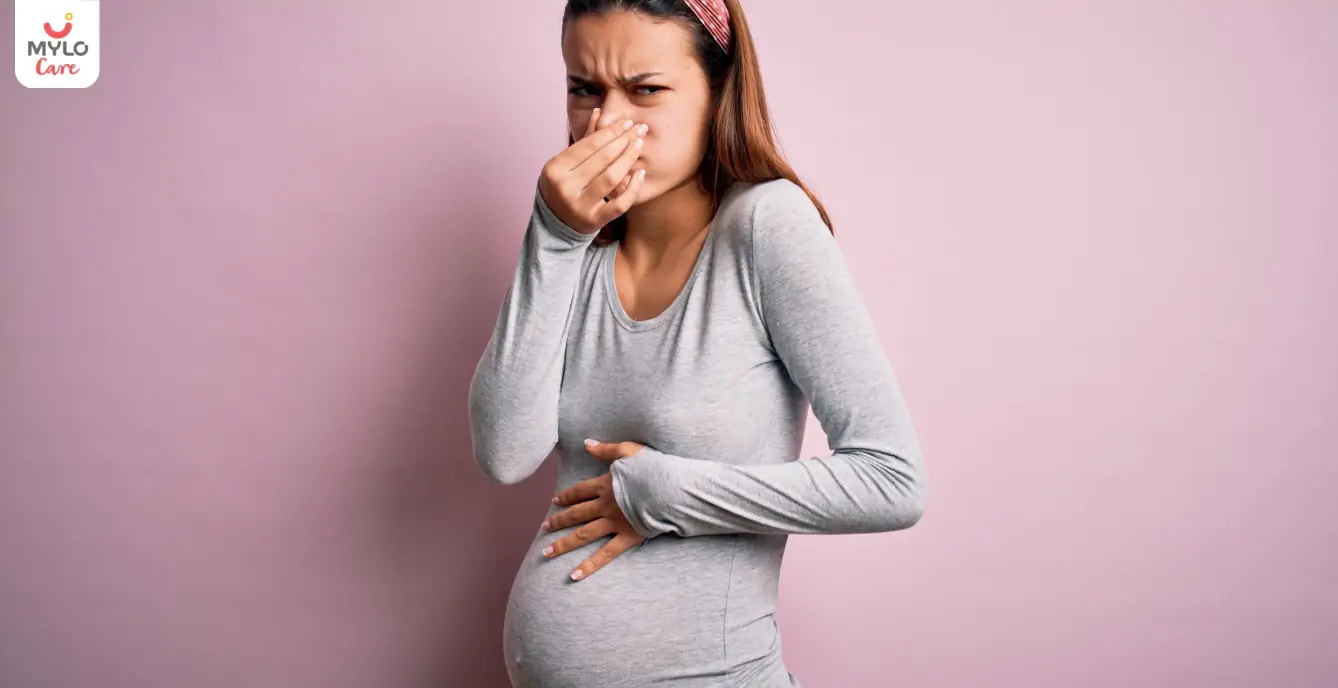Home

Women Specific Issues

Amenorrhea: Meaning, Symptoms & Causes
In this Article

Women Specific Issues
Amenorrhea: Meaning, Symptoms & Causes
Updated on 3 November 2023
Amenorrhea is the absence of a menstrual period due to various causes in the female body. This type of health problem arises most commonly during pregnancy. However, fluctuations in hormonal levels also cause amenorrhea to a great extent. In this article, we’ll discuss amenorrhea meaning, its symptoms and its causes in women.
What is amenorrhea?
Amenorrhea is known as the absence of menstruation or periods, which happens when you miss one or two periods consecutively. This can also be irregular periods. Primary amenorrhea and secondary amenorrhea are the two types of amenorrhea commonly seen.
1. Primary Amenorrhea
Primary amenorrhea is when there is an absence of menstrual periods from the onset of puberty until the girl child reaches the age of 15. This means that the child has not had her first period since birth.
2. Secondary Amenorrhea
Secondary amenorrhea is the absence of a period for someone who has had periods in the past. If you have had periods in the past, but your periods have stopped for the last three months, you could be suffering from amenorrhea.
What are the symptoms of amenorrhea?
Along with the absence of periods, depending upon the cause of amenorrhea, you may experience the following amenorrhea symptoms:
1. Milky nipple discharge
Milky nipple discharge or galactorrhea is a sign of amenorrhea in a female. The changes in hormonal levels lead to the development of galactorrhea or milky nipple discharge.
2. Hair loss
Excessive hair loss can also be a sign of amenorrhea.
3. Headaches
The development of regular headaches is common during amenorrhea. The condition affects not only your reproductive system but also affects your entire body.
4. Vision changes
Vision changes are also very common for women who face amenorrhea.
5. Excess facial hair
The hormonal changes that happen when you go through amenorrhea can also lead to the development of excess facial hair.
6. Pelvic pain
Pelvic pain and irritation can also be a sign of amenorrhea setting into your body.
7. Acne
The hormonal changes also affect your skin and lead to the development of acne.
What causes amenorrhea?
Many risk factors of amenorrhea come into play when changes in hormones and lifestyle occur. If you have a family history of early menopause or amenorrhea, you are more likely to face amenorrhea. Your genes also affect and determine your menstrual flow. Sometimes, genetic changes or genetic triggers lead to the onset of amenorrhea.
If you are facing obesity issues or are malnourished, there is a chance of developing amenorrhea. Similarly, if you are developing an eating disorder and disruptive eating patterns are common, you can develop amenorrhea. Poor diet and stress and any chronic illness can also put you at risk of amenorrhea.
Sometimes, primary ovarian insufficiency leads to amenorrhea when you experience menopause before age 40. Pituitary disorders that affect the secretion of hormones like prolactin can also lead to the development of amenorrhea. You might also face hormonal issues such as polycystic ovary syndrome, adrenal disorders, or hypothyroidism. Sometimes, the development of ovarian tumors also leads to amenorrhea. Surgical removal of ovaries or uterus can also lead to secondary amenorrhea.
The main causes of amenorrhea, in short, are
- Chromosomal or genetic problem
- Hormonal issues stemming due to the hypothalamus or the pituitary gland
- A structural problem with the reproductive organs
Common causes of secondary amenorrhea include:
- Pregnancy
- Breastfeeding
- Menopause
- Some birth control methods
- Chemotherapy and radiation therapy for cancer
- Previous uterine surgery with subsequent scarring
- Stress
- Poor nutrition
- Weight changes
- Excessive low body weight
- Chronic illness
How is amenorrhea diagnosed?
Various factors can cause amenorrhea, and the cause primarily determines the treatment of the condition. Therefore, it's important to diagnose amenorrhea to start with the right treatment at the earliest.
The following can be some useful points for diagnosing amenorrhea:
-
It is important to learn the medical symptoms and history related to amenorrhea, which often involves issues regarding sexual relations, reproductive health, the nature of past periods, and any other specific concerns of the patient.
-
The diagnosis of amenorrhea can be done by a variety of blood tests such as pregnancy test, thyroid function test, ovary function test, prolactin test, and male hormone test since it helps clarify any hormonal abnormalities that may be related to the disorder.
-
A hormone challenge test may be recommended if an estrogen deficiency is considered the root of amenorrhea.
-
Other diagnostic tests involve ultrasound imaging and magnetic resonance imaging (MRI). If other diagnostic testing techniques fail to identify, your doctor might suggest a hysteroscopy. During this procedure, a narrow, illuminated camera is inserted into your vagina and cervix to view the interior of your uterus.
You may also like: Screening Test for Women
Final Words
Numerous factors can contribute to amenorrhea. It does not imply that a woman is infertile and will never be able to conceive. Amenorrhea can be treated successfully. You should seek medical assistance if your irregular periods stop for at least 6 months or if your regular periods stop for 3 months or longer.
References
1. Klein DA, Paradise SL, Reeder RM. (2019). Amenorrhea: A Systematic Approach to Diagnosis and Management. Am Fam Physician. NCBI
2. Liu JH, Patel B, Collins G. (2000). Central Causes of Amenorrhea. NCBI
Tags
Amenorrhea: Meaning, Symptoms, & Causes in Hindi, Amenorrhea: Meaning, Symptoms, & Causes in Tamil, Amenorrhea: Meaning, Symptoms, & Causes in Telugu, Amenorrhea: Meaning, Symptoms & Causes in Bengali



Written by
Sanju Rathi
Get baby's diet chart, and growth tips

Related Articles
Related Questions
Influenza and boostrix injection kisiko laga hai kya 8 month pregnancy me and q lagta hai ye plz reply me

Hai.... My last period was in feb 24. I tested in 40 th day morning 3:30 .. That is faint line .. I conculed mylo thz app also.... And I asked tha dr wait for 3 to 5 days ... Im also waiting ... Then I test today 4:15 test is sooooo faint ... And I feel in ma body no pregnancy symptoms. What can I do .

Baby kicks KB Marta hai Plz tell mi

PCOD kya hota hai

How to detect pcos

RECENTLY PUBLISHED ARTICLES
our most recent articles

Diet & Nutrition
গর্ভাবস্থায় আলুবোখরা: উপকারিতা ও ঝুঁকি | Prunes During Pregnancy: Benefits & Risks in Bengali

Diet & Nutrition
গর্ভাবস্থায় হিং | ঝুঁকি, সুবিধা এবং অন্যান্য চিকিৎসা | Hing During Pregnancy | Risks, Benefits & Other Treatments in Bengali

Women Specific Issues
স্তনের উপর সাদা দাগ: লক্ষণ, কারণ এবং চিকিৎসা | White Spots on Nipple: Causes, Symptoms, and Treatments in Bengali

Diet & Nutrition
গর্ভাবস্থায় পোহা: উপকারিতা, ধরণ এবং রেসিপি | Poha During Pregnancy: Benefits, Types & Recipes in Bengali

Diet & Nutrition
গর্ভাবস্থায় মাছ: উপকারিতা এবং ঝুঁকি | Fish In Pregnancy: Benefits and Risks in Bengali

Diet & Nutrition
গর্ভাবস্থায় রেড ওয়াইন: পার্শ্ব প্রতিক্রিয়া এবং নির্দেশিকা | Red Wine During Pregnancy: Side Effects & Guidelines in Bengali
- ইনার থাই চ্যাফিং: কারণ, উপসর্গ এবং চিকিৎসা | Inner Thigh Chafing: Causes, Symptoms & Treatment in Bengali
- গর্ভাবস্থায় ব্রাউন রাইস: উপকারিতা ও সতর্কতা | Brown Rice During Pregnancy: Benefits & Precautions in Bengali
- Velamentous Cord Insertion - Precautions, Results & Safety
- Unlock the Secret to Flawless Skin: 7 Must-Have Qualities in a Face Serum
- Unlock the Secret to Radiant Skin: How Vitamin C Serum Can Transform Your Complexion
- Gender No Bar: 10 Reasons Why Everyone Needs a Body Lotion
- Unlock the Secret to Radiant Skin How to Choose the Perfect Body Lotion for Your Skin Type
- Top 10 Reasons to Apply a Body Lotion After Every Bath
- Communication in Toddlers: Milestones & Activities
- How to Improve Vocabulary for Toddlers?
- A Comprehensive Guide to Understanding Placenta Accreta
- Vulvovaginitis in Toddlers Causes, Symptoms and Treatment
- A Comprehensive Guide to Understanding Cerebral Palsy in Children
- Bitter Taste in Mouth During Pregnancy: Understanding the Causes and Remedies


AWARDS AND RECOGNITION

Mylo wins Forbes D2C Disruptor award

Mylo wins The Economic Times Promising Brands 2022
AS SEEN IN
















- Mylo Care: Effective and science-backed personal care and wellness solutions for a joyful you.
- Mylo Baby: Science-backed, gentle and effective personal care & hygiene range for your little one.
- Mylo Community: Trusted and empathetic community of 10mn+ parents and experts.
Product Categories
baby carrier | baby soap | baby wipes | stretch marks cream | baby cream | baby shampoo | baby massage oil | baby hair oil | stretch marks oil | baby body wash | baby powder | baby lotion | diaper rash cream | newborn diapers | teether | baby kajal | baby diapers | cloth diapers |








